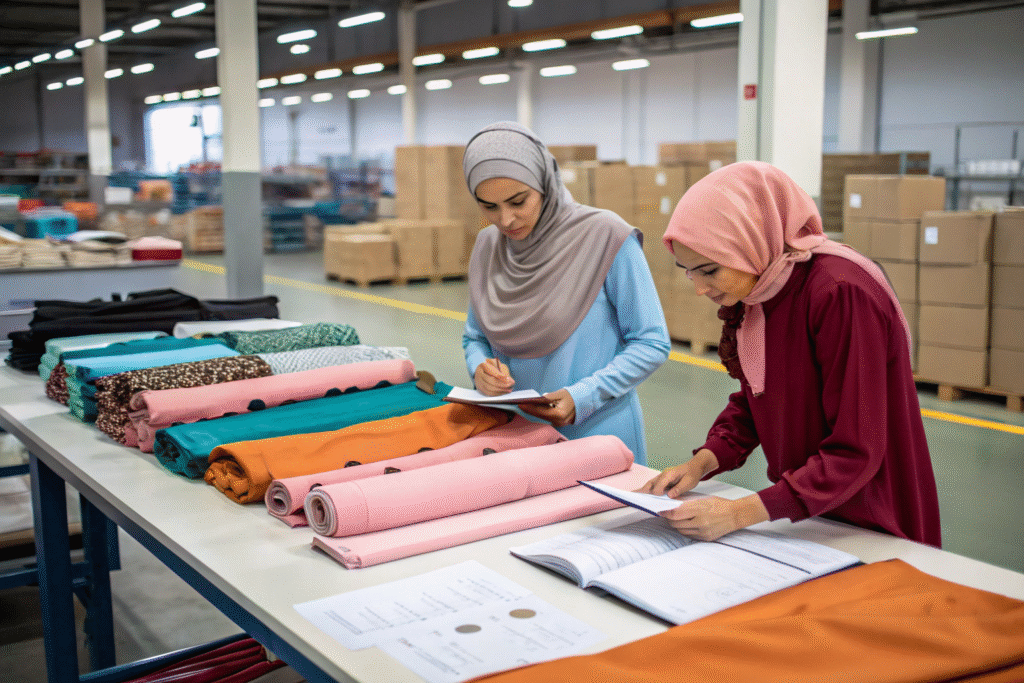In global trade, tariff classifications can be the difference between paying high import duties and enjoying duty-free access. For silk headscarves, a product often associated with luxury and fashion, the way we classify them under Harmonized System (HS) codes directly affects pricing, competitiveness, and profitability. Many of our overseas clients—from boutique retailers to large chain stores—have realized that knowing how to navigate anti-tariff classifications can save thousands of dollars per shipment.
As a manufacturer in China, I have seen firsthand how correct classification opens markets. For example, certain silk headscarves can be classified under categories that carry reduced or even zero tariffs in the US or EU, especially under free trade agreements or special duty programs.
Getting this right is not just about filling in the right HS code; it’s about strategic sourcing, documentation, and proof of origin. If you sell silk accessories internationally, understanding these rules is as critical as choosing the right fabric pattern.
How Do Silk Headscarves Qualify for Lower Tariff Codes?
Many importers assume that all silk products attract the same tariff, but this is not the case. Silk headscarves can sometimes be classified under accessories instead of apparel, depending on their design, intended use, and construction. This subtle difference can lead to a lower duty rate in some markets.
By carefully reviewing the Harmonized System (HS) codes, you may find that a pure silk scarf worn as a fashion accessory is taxed differently than one classified as headwear. Some importers work with customs brokers who specialize in textile classification to identify these opportunities.
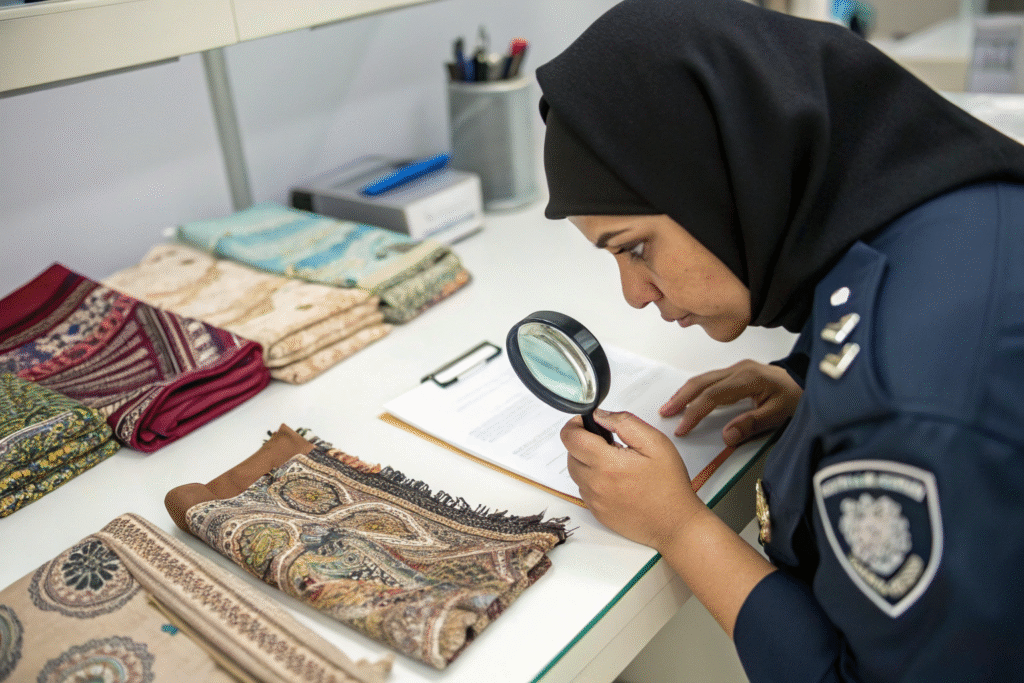
What HS Code Applies to Pure Silk Headscarves?
The HS code for silk scarves can vary between 6214.10 (shawls, scarves, mufflers of silk) and other subcategories depending on blend or finish. According to USITC’s Harmonized Tariff Schedule, pure silk scarves often fall under codes with lower duty rates, sometimes free for countries with trade agreements. Importers should also consult the WCO HS Nomenclature for the latest updates.
Can a Mixed Fabric Headscarf Be Classified as Silk?
If a headscarf contains a high percentage of silk but is blended with other fibers, the tariff code may shift to a mixed-fiber classification, often with higher duty. According to CBP’s informed compliance guidelines, the chief weight fiber rule applies, meaning customs will classify the product based on the dominant fiber by weight. This makes accurate lab testing and documentation critical.
Which Countries Offer Duty-Free Access for Silk Accessories?
One of the fastest ways to reduce tariffs on silk headscarves is to take advantage of Free Trade Agreements (FTAs). Countries that have special arrangements with your target market can offer significant savings.
For example, the EU’s Generalised Scheme of Preferences (GSP) grants reduced or zero tariffs for products imported from certain developing countries, including some categories of silk accessories. Similarly, the US has trade preference programs for countries under agreements like USMCA or AGOA, although China is not a beneficiary.
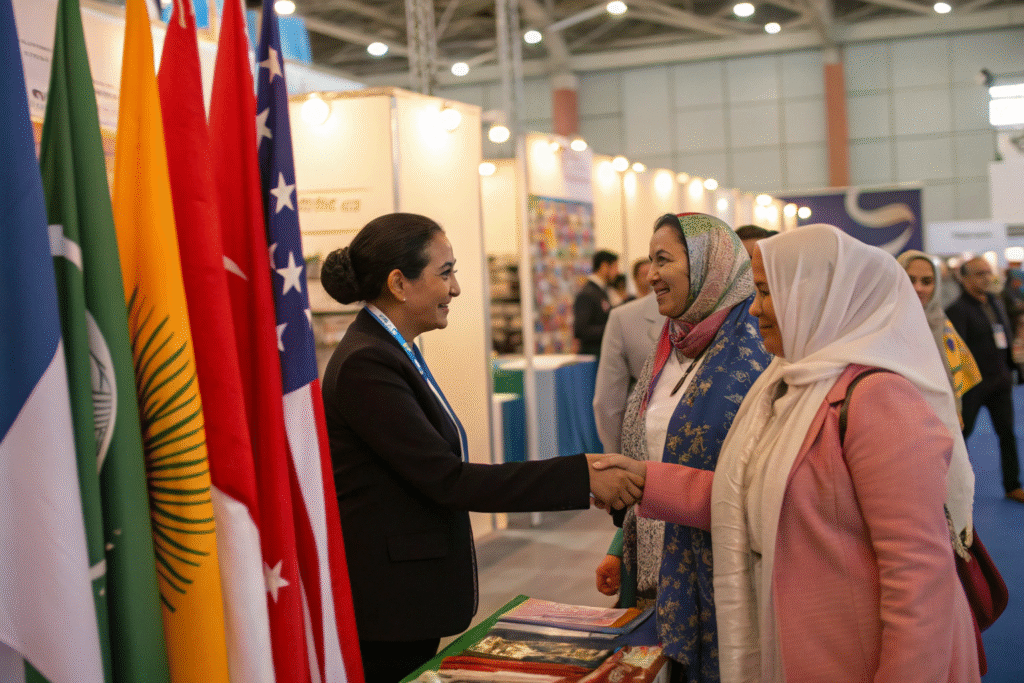
What Trade Agreements Benefit Silk Headscarves?
The European Commission’s Access2Markets portal allows importers to check if a silk headscarf qualifies for reduced duties under EU trade deals. Some Asian exporters have relocated parts of their production to Vietnam or Cambodia to benefit from such agreements. In the US, the Office of the United States Trade Representative provides lists of active FTAs and their coverage.
How Can Rules of Origin Affect Tariff Rates?
Rules of origin are critical because they define where a product is “from” in the eyes of customs. Even if your silk is woven in China, sewing it in an FTA partner country may allow the final product to qualify for reduced tariffs. The World Trade Organization’s rules of origin overview explains how these regulations work globally.
How to Prepare Customs Documentation for Tariff Benefits?
Recraft指令--Exporter’s office scene with staff preparing silk headscarf shipment documents, origin certificates, and packing lists, surrounded by boxes of scarves, bright lighting, realistic facial features, no text or maps.
Even if your silk headscarves qualify for a favorable classification, you will not get the benefit without correct documentation. Customs authorities require proof of classification and origin, and mistakes can result in delays or fines.
We provide clients with detailed packing lists, fabric composition reports, and certificates of origin as part of our standard export service. This proactive approach ensures our shipments move smoothly through customs.
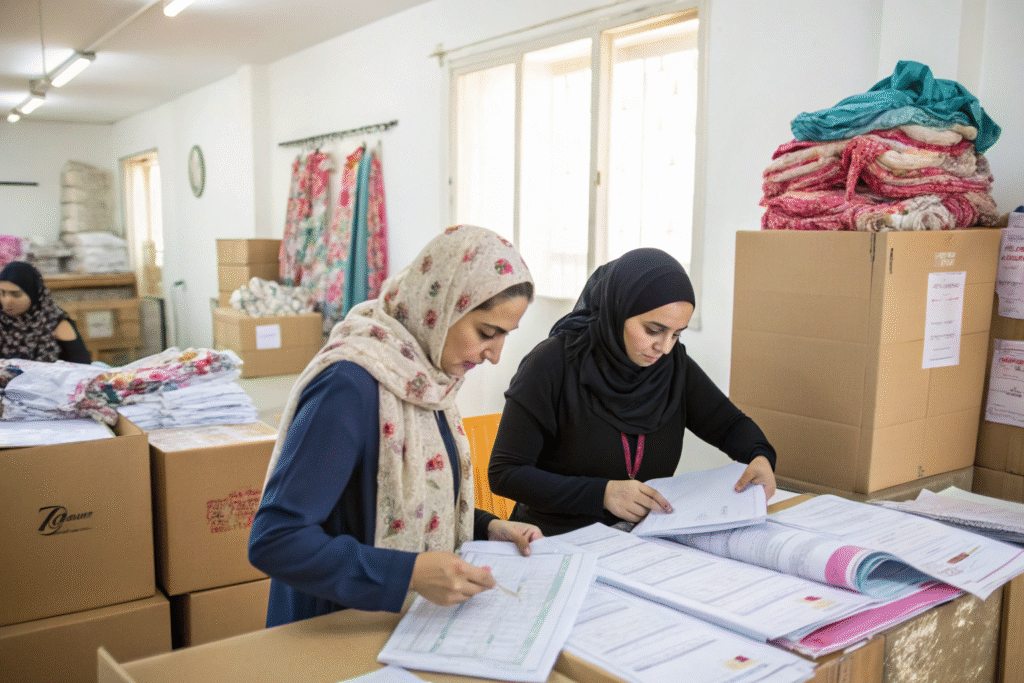
Which Documents Prove Eligibility for Lower Tariffs?
The most common proof is a certificate of origin, issued by a recognized chamber of commerce. According to ICC WCF guidelines, this document verifies the manufacturing country, which is crucial for tariff determination. Supporting paperwork, such as lab test reports for fabric composition, can further strengthen your case.
Can Digital Customs Filing Speed Up Clearance?
Yes, many countries now accept electronic customs declarations, reducing processing times. Platforms like TradeLens or national e-customs portals allow importers to submit documents before the shipment arrives, enabling faster release. For high-value silk headscarves, early filing can be a competitive advantage.
What Are the Risks of Misclassification in Silk Headscarf Imports?
Misclassification can lead to retroactive duties, penalties, or even seizure of goods. In some cases, importers may be accused of tariff evasion, which can damage a brand’s reputation and lead to legal action.
We advise clients to consult a licensed customs broker before finalizing HS codes, especially for products with mixed materials or special finishes. Correct classification is as much about legal compliance as it is about saving costs.
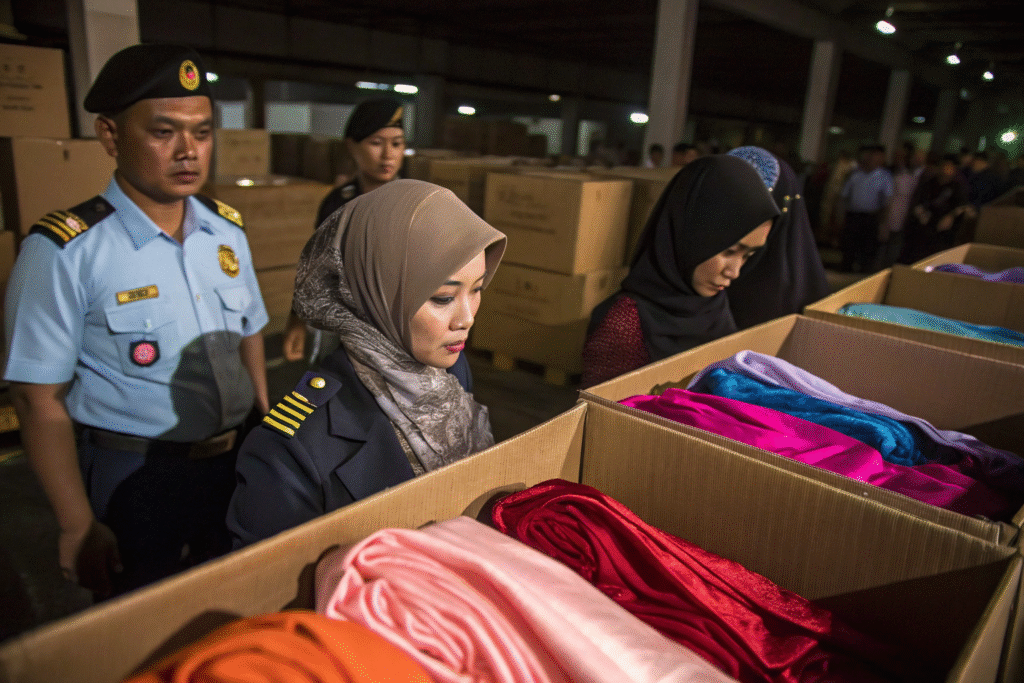
What Happens If Customs Disagrees with Your Classification?
If customs challenges your HS code, they may reclassify the shipment at a higher duty rate. According to CBP ruling procedures, importers can appeal, but the process can be time-consuming. Having pre-approved binding rulings from customs can protect you from surprises.
How Can Third-Party Verification Reduce Risk?
Using third-party inspection services like SGS or Bureau Veritas ensures that the product matches its declared classification. These verifications add credibility to your customs submissions and reduce the likelihood of disputes.
Conclusion
Understanding anti-tariff classifications for silk headscarves is not just a paperwork exercise—it is a strategic advantage. By choosing the right HS code, leveraging trade agreements, preparing accurate documents, and avoiding misclassification, you can protect profit margins and ensure smooth cross-border trade.
If you want to produce your own line of high-quality silk headscarves with proper tariff classification support, you can work with our company, Shanghai Fumao. Contact our Business Director Elaine at elaine@fumaoclothing.com for custom production and export solutions tailored to your market.

